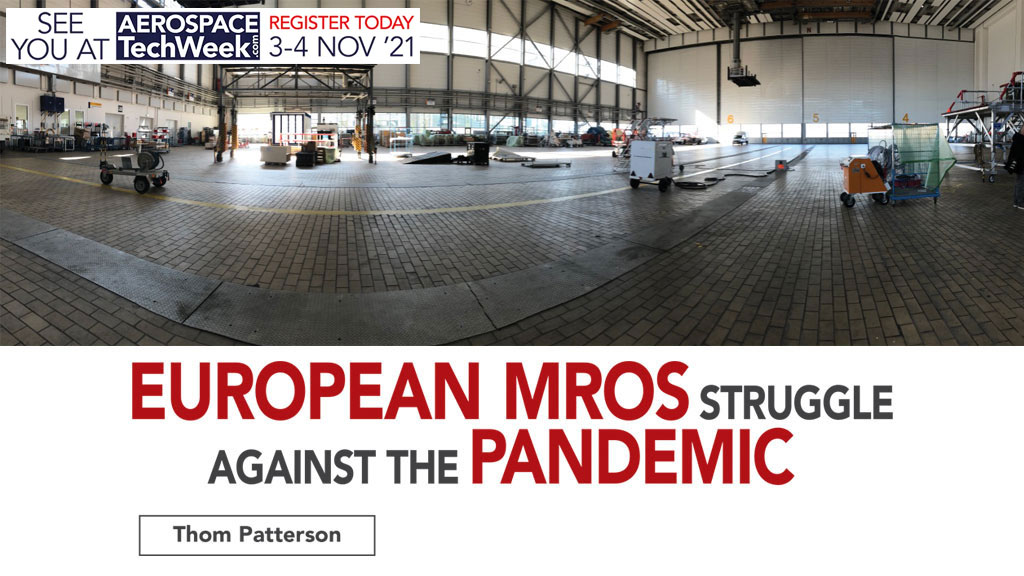Europe’s maintenance, repair and overhaul businesses have entered uncharted territory in 2020. As the COVID-19 pandemic severely hobbles the aviation industry with plummeting aircraft capacity and shrinking fleets, experts agree Europe’s MROs will be among the hardest hit globally.
The next few years will likely be challenging at best, forcing managers to muster all their resources as they make the difficult journey toward better days.
Some insiders believe it’s a crisis serious enough to threaten the survival of some independent MRO operations, leaving the industry permanently changed, moving forward.
Sudden airline fleet reductions due to a massive drop in passengers has trickled down to MROs — resulting in a regional market at least 50 percent of what it was, according to aerospace industry analyst Richard Brown, managing director of London-based NAVEO Consultancy.
The change has been so drastic that comparisons to the period after the 9/11 attacks in 2001 and the global recession of 2008 don’t come close.
To stop the financial bleeding, airlines are in a cash-conservation mode, Brown says, which means they’re largely avoiding maintenance when possible, within regulations.
“Right now, the airlines are in a holding pattern,” Brown said. “They’re making decisions about labor, their fleet, decisions which affect people and the traveling public.”
The result: Some 2020 projections show Western European MRO revenue will top out at just $8.3 billion — a 59 percent drop in the year’s pre-COVID-19 projection of $20.1 billion, according to figures published by Statista.
That’s prompting maintenance operations to re-think their business strategies, develop new revenue streams and expand existing ones.
MRO executives and industry analysts offered Aviation Maintenance Magazine their perspectives on the current situation, including what scenarios may be on the horizon and how they’re preparing to meet the challenge.
What happened?
First, let’s take a minute to remember how we got here. In early 2020, public concerns about contracting or spreading the virus triggered a free fall in passenger demand, worldwide. By April, the crisis had already resulted in a 94.3 percent reduction in industry-wide revenue passenger kilometers – “the largest contraction in recent history,” according to the International Air Transport Association (IATA).
In Europe alone, April RPKs were down 99 percent, year-on-year. The sudden drop off forced dozens of airlines from Aer Lingus to Volotea to suspend service for weeks, and in some cases, months. To save money, airlines began fleet cuts. Planes were parked. Airlines decided to retire older aircraft sooner than planned.
The MRO industry went from boom to gloom in a heartbeat.
‘We have an MRO infrastructure that’s built to support the forecasted fleet for this year, which would be 35,000 airplanes, the biggest fleet we’ve ever had,” Brown says. “It was the biggest MRO market that we’ve ever had and suddenly we’re down to production levels that I think will be around the level of about 2006.”
How Bad?
David Doyle, vice president, corporate strategy, business development and innovation management at Hamburg, Germany-based Lufthansa Technik, said it’s “clear this is a crisis of a dimension which the aviation and aerospace industry has never experienced.”

Management, Lufthansa Technik
“Previous crises were more regional in their nature and had shorter dips than we have experienced in recent months,” Doyle says.
Plummeting airline capacity has prompted many airlines to park significant portions of their fleets as well as accelerate fleet retirement plans. The targets of these early retirements have been fuel-guzzling widebody quadjets.
Europe’s widebody early retirement list includes Lufthansa Group, which has temporarily decommissioned its Airbus A340-600s. Lufthansa Group also has fully decommissioned six Airbus A380s two years early and five Boeing 747-400s. Air France said goodbye to its A380 fleet two years in advance and also decommissioned its remaining A340-300s. In addition, Virgin Atlantic and Iberia have chosen to let go of their A340-600s earlier than planned.
Worldwide, about 2,000 aircraft will effectively be retired in 2020, according to NAVEO. That’s a nearly 300 percent increase from 2019’s approximately 680 retirements. NAVEO forecasts that — between 2020 and 2026 — a total of around 1,200 Airbus A320ceos, 650 Boeing 737NGs, 330 Boeing 767s, 300 Boeing 757s and 440 Boeing 777-200s will be retired from the global fleet.
Keep in mind that A320ceos and 737NGs make up the lion’s share of all in-service or stored aircraft.
Meanwhile, orders and production of new airliners at Airbus and Boeing have plummeted. The long-term outlook for aircraft orders in the future haven’t yet factored in a post-pandemic world.
Nonetheless, it’s clear the financial ripple effect from the nearly simultaneous retirement of so many aircraft will amount to a significant revenue loss for European MROs.
Doyle said the increased retirement of older planes will result in a glut of surplus material hitting the market. “This will lead to a devaluation of the assets on the books of many MROs and airlines and a premature obsolescence of tooling and inventory.”
However, as European COVID-19 cases began to decrease this summer, some European airlines returned more aircraft to service. Lufthansa for example reported in June that 50 percent of its fleet is back in the air. Air France says it plans to return to 60 percent by the end of 2020.
“The depth of the crisis is not yet known,” says Johann Panier, senior vice president Business Development, Air France Industries-KLM Engineering & Maintenance. “But it will depend on several factors, including the reduction in flight hours, fleet management and optimization of maintenance actions, the accelerated transition to new generation aircraft, but also possible bankruptcies or attritions.”
New Ideas
So, what can be done? European MROs are using a mix of traditional cost-saving methods and outside-the-box ideas to battle these historic conditions.
Tried-and-true tactics include freezing new hires, cutting spending and reducing staff work hours.

Vilnius, Lithuania-based FL Technics CEO Zilvinas Lapinskas said his company has reduced hours for some employees and divided technicians and other workers into two shifts – two days on and two days off.
In addition, FL Technics’ Vilnius workforce of 800 has been cut by 60, Lapinskas said. Some salaries have been cut 15-20 percent.
Other MROs say they’re canceling or postponing plans to buy big-ticket inventory items such as spare engines. Some, including Estonia’s Magnetic MRO, have quickly renegotiated terms and conditions with suppliers.
In addition, Magnetic MRO has been finding new ways to work.
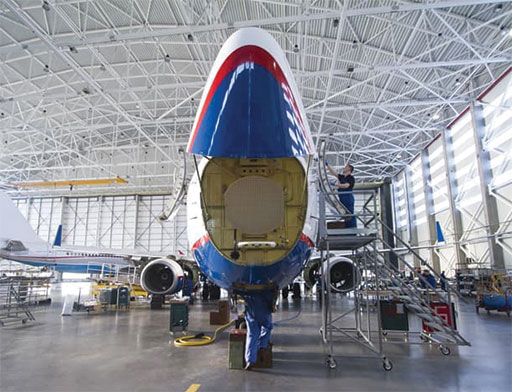
The company has launched a virtual aircraft inspection program, which allows clients access to any necessary information without physically being on site. The process uses video, the internet and a “structured file” system “allowing a potential customer to efficiently locate and analyze” any section of an aircraft.
‘It’s Working’
At the outset of the COVID-19 lockdown, Storm Aviation, an international line maintenance and training provider based in the Diamond Hangar Aviation Hub at London Stansted Airport, began putting resources into its internal IT infrastructure. With in-person meetings and collaboration nearly impossible, Storm relies on virtual meetings to keep productivity on track.
“As a result, we communicate more now and have better cross-interaction between departments,” said Storm Aviation CEO Thomas Buckley. “Every day at 9:15 and 4 o’clock the senior management team gets together, meets on screen and we run through what we’re doing, what we’re planning on doing, and thoughts and ideas for the short, medium and long-term. And it’s working.”
Temporary P2F
COVID-19 has already changed the marketplace and some European MROs have quickly responded by evolving their available services to meet the need.
For example, in May, Lufthansa Technik announced it had received interest from more than 40 airlines looking for expertise to temporarily convert cabin space in passenger airliners so they could safely carry cargo. As a result, Lufthansa Technik began offering a temporary P2F service program, including helping customers obtain necessary certification.
“There was no need for such a temporary modification before,” says Lufthansa Technik’s Henning Jochmann, senior director aircraft modification base maintenance.
A key reason behind this emerging customer need: a decline in available air freight capacity. The pandemic disrupted the air freight market by lowering the amount of available cargo space in the bellies of passenger airliners. As passenger flights decreased, so did available belly space. In addition, cargo normally transported aboard passenger planes began shifting to freight airlines — helping that sector remain strong despite the pandemic.
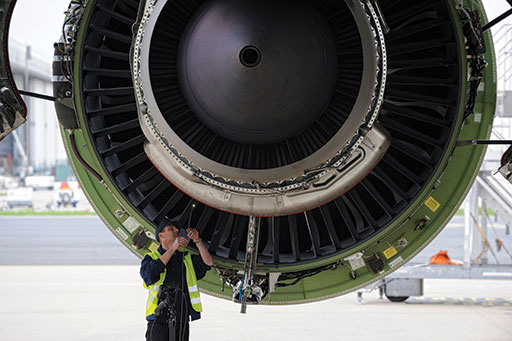
“The missing belly capacity due to the significant reduced passenger flights is the main driver for the additional need,” Jochmann said.
Magnetic MRO and AFI KLM have also begun offering passenger-to-freighter modifications. AFI KLM offers two options. Airlines can use their current cabin and only apply minor changes, or they can choose to remove the seats for a cargo configuration.

Big Data
Another way European MROs are rallying to fight the pandemic is by growing their existing internet-based revenue streams, such as data products.
Digital analytics platforms aimed at increasing business efficiency and saving money on airline operations will gain value in times like these. They provide convenient ways for airlines to review their procurement strategies, find places to trim budgets and opportunities to gain more independence from OEMs.
Products like Lufthansa Technik’s Aviatar gather massive amounts of airline data and crunch the numbers. Solutions garnered from the data promise to optimize hours of equipment operation, suggest significant cost-cutting strategies and implement additional safety considerations.
Predictive maintenance tools such as AFI KLM’s PROGNOS for Inventory can have a positive impact on the supply chain. “As we can predict the needs of components, we can adjust the numbers of parts and where it is valuable to place them,” AFIKLM E&M’s Panier said. PROGNOS “capitalizes on the vast amount of data generated by the Air France and KLM fleets.” When solutions and innovations are developed, their relevance and operational performance are verified before they are shared with customers.
Ideally these MRO data-crunching products monitor multiple systems and fleet management apps and provide operators with critical notifications that ultimately reduce flight cancellations and delays by using predictive maintenance algorhythms.
Lufthansa Technik’s Doyle said the company’s investment in digital technologies and platforms is paying off despite the crisis. “These look like the strongest growth areas in our portfolio in the current environment,” Doyle said.

Government Support
Early in 2020, when airline capacity initially plummeted, most European governments responded by offering financial support for airlines and MROs, including subsidizing employee payrolls.
“The vast majority of our engineering and front-line staff are in this furlough scheme,” said Storm Aviation CEO Buckley. “That gives us a little bit of breathing space.”
Industry experts, including Marcel Versteeg, owner of Netherlands-based VZM Management Services, warn of a possible labor shortage. The worry is that some MROs may panic and order excessive layoffs. “A significant number of European MRO staff include technicians who are approaching retirement age,” Versteeg said.
He says managers may want to consider relying on attrition to reduce the workforce. Resisting the urge to pull the trigger on widespread layoffs may be the best decision in the long term, because in a worst-case scenario, MROs could find themselves without enough staff to quickly snap back when business levels return to more nominal levels (for more info on this concern, see “Workforce Challenges” story on page 26 of this issue).

Magnetic MRO says its business has been hit significantly. “We had to reduce our headcount by 22 percent,” said Inga Duglas, Magnetic MRO commercial director. “Nevertheless we believe we still have a strong team to pick up and bring the company through this turbulence.”
She expects Magnetic MRO to return to pre-COVID-19 capacity by late 2021. “However, our ultimate goal is to keep growing and expanding our business, regardless of what else this new reality will bring,” Duglas said.
Buckley expects employment levels to remain steady at Storm Aviation through 2020. The company’s current headcount totals around 200. “Their locations may be different,” Buckley said, “but from an organizational size point of view, we won’t be too dissimilar as we are today.”
Global Connections
Experts and industry leaders agree a key factor in making it through these trying times will be global business. European MROs with customers outside the region are going to be better positioned to succeed.
Storm Aviation — a subsidiary of Avia Solutions Group — operates out of 15 permanent locations worldwide, including Bangladesh and Africa. Customers include more than 40 airlines, such as easyJet, Emirates, KLM Royal Dutch Airlines and Lufthansa. “A good, diverse spread of locations and airlines doesn’t eradicate all the risk,” said Storm CEO Buckley, “but it certainly does spread and mitigate it across a wider field.”
In Germany, Lufthansa Technik’s Doyle agreed. “We are recording significant workload declines in various business fields and regions,” he said, “but at the same time business is slowly recovering in other areas and different parts of the world, e.g. in Asia.”
NAVEO aerospace analyst Brown also sees the trend. “As traffic improves in Asia — particularly in Singapore, South Korea and China — some of these airlines are sending their maintenance or their components and engines to Europe,” Brown said.

Buyer’s Market?
Perhaps more important than globalization or size is the factor of financial liquidity. Smaller European MROs may be able to survive with the help of a diverse customer base and widespread locations. But the ability to provide enough cash when necessary is crucial.
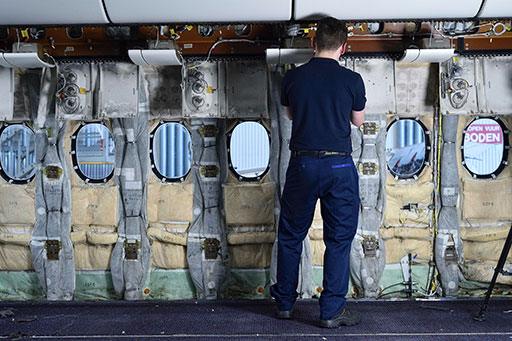
The importance of liquidity is a factor as European MRO suppliers change their prices and terms in response to the pandemic economy.
“We’re already seeing price changes on certain things,” said Buckley at Storm Aviation. “Credit lines are changing with companies we have good long-term relations with. Sixty-day invoice terms are dropping down to thirty. Some companies are even requiring prepayment. This is all just for them to keep their liquidity. Suppliers are suffering because their cash flow is severely impacted.”
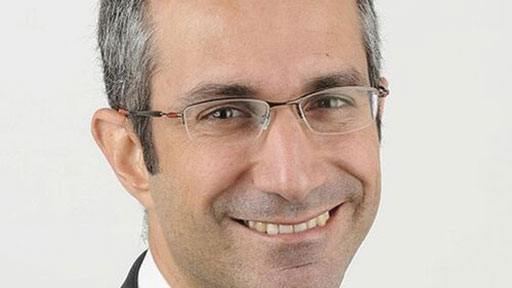
Buckley fears even liquidity may not be enough for some “mom-and-pop” or family-owned MROs that lack customer diversity as well as widespread locations and the ability to react quickly.
“They might be family-owned or a company with a couple of partners who’ve built something up over the years,” Buckley said. “If they haven’t run it as a business for growth — perhaps running it as more of a life-style supporter — they will struggle.”
As FL Technics’ CEO Lapinskas put it: “Competition is higher in Europe. It’s not so easy to predict who will die and who will survive. We are an independent MRO,” Lapinskas adds. “We don’t have an airline behind us. We have to fight for our customers every day. You have to be fast and cost effective. It’s in our DNA.”
Eventually, as airlines learn to operate with significantly less annual base maintenance, heavy maintenance and light base maintenance, Buckley predicts MROs will become a buyer’s market. “Some of the smaller organizations may not be able to keep up,” he said. “They might not have enough economy of scale to compete — assuming they’ve got the liquidity to make it thru this period.”
Indeed, independent line maintenance MROs are threatened by reduced airline operations, according to VZM’s Market Outlook 2020. The VZM report also says the current environment is also generating increased global interest in potential mergers and acquisitions for line maintenance MROs.
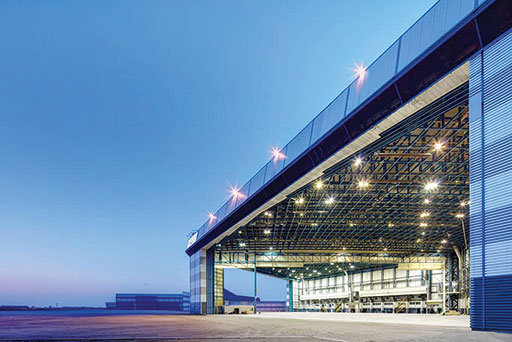
Changing World
Aviation industry leaders, including European MRO chiefs, have found themselves facing perhaps the most challenging crisis of their careers, an unpredictable market, hobbled by a fearsome pandemic, is now forcing them to make huge decisions affecting their labor forces, their inventories and their services which may be little more than calculated rolls of the dice.
Many in the industry believe much of the future hinges on when a successful vaccine can be developed and distributed. Because the way forward includes so many unknown variables, a timeline to success is virtually anybody’s guess. “Our own scenario planning confirms the market view that a recovery to 2019 MRO volumes will be reached again in 2023,” said Doyle at Lufthansa Technik.
Brown expects global passenger airline capacity to follow a similar path. In 2021 it will “rebound relatively strongly” recovering between 71-82 percent of 2019’s annual peak. Global passenger traffic won’t reach 2019 levels until at least 2023 or 2024, Brown predicts.
If you think finding a successful vaccine will bring the industry back to the days before COVID-19, Buckley would disagree. “I don’t think the vaccine is the silver bullet at all,” said Buckley. “The world is changing. If a pandemic can happen once, it will happen again. I think people’s lives, people’s attitudes, people’s businesses will now change in a wholly different direction. And I think the world will continue in that direction.”
Many analysts and industry leaders say they’re optimistic about the future, including Lapinskas at FL Technics. “I don’t know when things will get better,” he said. “But I believe in the autumn we will see a clearer picture of what is going on.”
“The aviation industry has seen this kind of thing before,” Brown said. “It’s an industry that is used to a crisis. Many people in the MRO industry, if not most, are engineers. They’re fact-based, process people. They take a situation and they deal with it. Because that’s what we do as engineers. We find solutions.”
